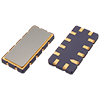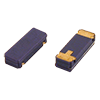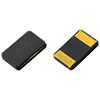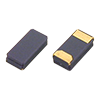Improving Wireless Communications with Crystal Filters and SAW Filters
28 Jul 2023
INSPIRE SERVICES
The world of wireless communication is a complex domain, wherein the underpinning technology remains out of sight, yet plays an integral part in our daily lives. At the heart of this hidden orchestra of technological components lies the principle of frequency control.
Frequency control in wireless communication is fundamental to the efficient operation and performance of wireless systems. Without precise control over frequency, we would experience poor call quality, loss of data, and an overall disruption to our wireless services.
Two of the critical components that play an integral role in frequency control products are Crystal Filters and Surface Acoustic Wave (SAW) Filters.
These are not mere technological jargons; instead, they play help to refine the frequency spectrum, enhancing signal integrity, and mitigating interference, thus propelling the efficient functioning of our wireless communication systems.
In the following article, we will undertake a thorough investigation into these components, discussing their functioning, importance, and contribution to the vast landscape of wireless communication.
Stay with us as uncover the role and advantages that both crystal filters and SAW filters play in our increasingly wireless world.
Understanding Crystal Filters
Crystal filters are fundamental components in the realm of frequency control, pivotal to narrow band radio and communication applications.
They are a type of electronic filter that uses the mechanical resonance of an electrically stimulated crystal of piezoelectric material to selectively filter frequencies. These filters are highly valued for their exceptional precision, offering low insertion loss and high stability, even under changing environmental conditions. Also being passive components they have no impact on battery life for portable devices.
A crystal filter's operation hinges on the unique properties of the piezoelectric crystal. When an electrical signal is applied to the crystal, it vibrates at a particular resonant frequency, filtering out any frequencies that do not come close to this resonance.
This mechanical resonance of a crystal filter is characterised by its exceptional frequency selectivity and stability. The narrower the passband of the filter, the more tighter the frequency selection becomes, and the better the filter performs in eliminating unwanted signals as long as the filter is wide enough to pass the wanted signal.
One of the critical characteristics of crystal filters is their temperature stability. Since the resonant frequency of a crystal filter is affected by temperature, high-quality filters are designed to maintain their frequency under varying temperature conditions.
This characteristic is of paramount importance in applications requiring a stable and reliable signal, such as satellite communication and precision instrumentation.
Benefits of Crystal Filters in Wireless Communications
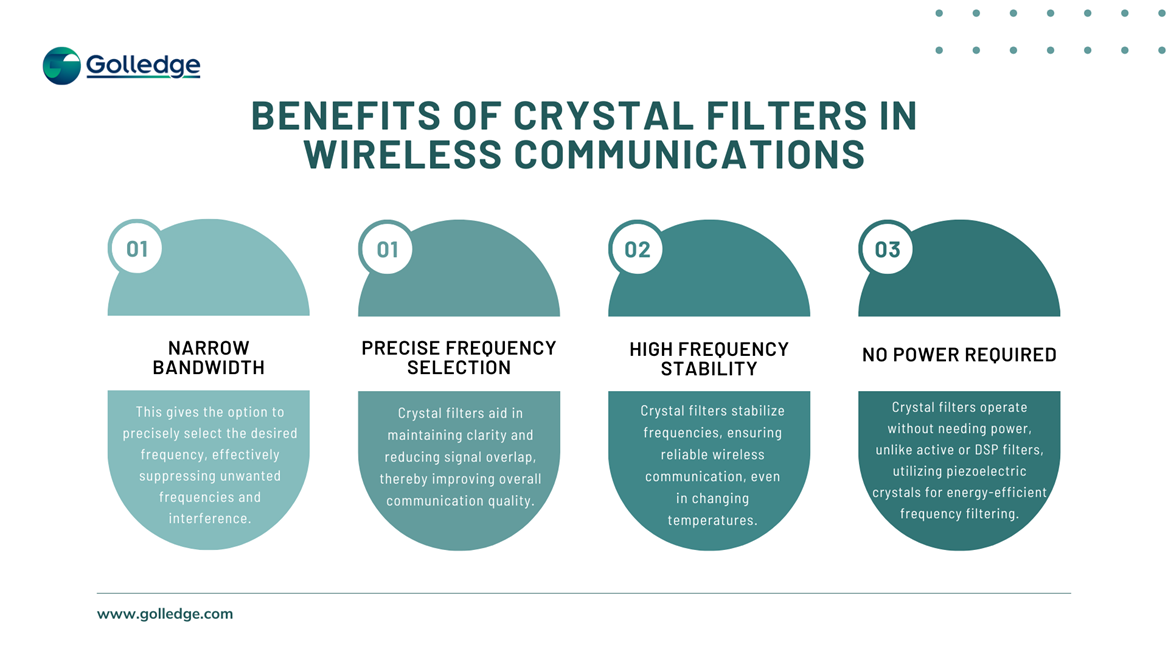
Crystal filters are integral to the world of wireless communications, offering unique advantages that significantly enhance the functionality and performance of these systems.
- Narrow bandwidth: This gives the option to precisely select the desired frequency, effectively suppressing unwanted frequencies and interference.
- Precise frequency selection: Crystal filters aid in maintaining clarity and reducing signal overlap, thereby improving overall communication quality.
- High-frequency stability: Crystal filters frequency stability, particularly under varying temperature conditions, contributes significantly to the reliability of wireless communication systems.
- Do not require power to function: Unlike active filters or filters implemented in DSP, which necessitate a power supply to operate, crystal filters leverage the inherent properties of piezoelectric crystals to filter frequencies which translates into an energy-efficient operation.
By leveraging the benefits of crystal filters you can improve the performance, reliability, and efficiency of your device’s wireless communication.
Their ability to provide precise frequency selection, stability, and power-efficient operation plays a critical role in enhancing the quality of communication, minimizing interference, and ensuring the overall robustness of your system.
Therefore, crystal filters, like those supplied by Golledge Electronics, remain an essential component in the development and advancement of wireless communication technologies.
Applications of Crystal Filters & SAW Filters
Both crystal filters and Surface Acoustic Wave (SAW) filters have a broad range of applications, especially in high-performance communication systems where frequency control and signal quality are paramount.
High-performance communication applications demand:
- Precise frequency selection
- High stability
- Minimal signal interference
Crystal filters are specifically designed to meet these requirements.
For instance, in the field of satellite communication, where the communication signal must travel vast distances and the system's stability is crucial, crystal filters' precision and stability are indispensable.
Moreover, their narrow bandwidth aids in transmitting and receiving distinct signals on densely packed frequency bands, thus preventing crosstalk and signal overlap in multi-channel systems. These features are equally important in telecommunications, where clear and uninterrupted communication is a necessity.
SAW filters and duplexers, on the other hand, are known for their compact size, low cost, and suitability for high-frequency applications. They effectively filter out unwanted frequencies and reduce signal noise, ensuring a clean and clear signal path.
These attributes make them ideal for use in radio frequency (RF) and intermediate frequency (IF) filtering, specifically in mobile communication devices such as smartphones and tablets.
Additional applications that both crystal filters and SAW filters are employed in, include:
- Television broadcasting
- Radio broadcasting
- Radar systems
- Global positioning systems (GPS).
They contribute significantly to improving signal quality and system performance in these applications by offering precise frequency control and robust signal filtering capabilities.
A Deep Dive into SAW Filters
SAW filters are another essential facet of frequency control technology, however, they operate on an entirely different principle compared to crystal filters.
Despite this, their ultimate function in the wireless communication spectrum is similar: to provide high-quality, precise frequency control.
A SAW filter employs the properties of Surface Acoustic Waves, a type of sound wave that travels along the surface of a material. These waves are generated in a piezoelectric substrate material, similar to crystal filters, but their behavior is distinctly different.
The operation of a SAW filter begins with an input transducer, which converts the electrical signal into a mechanical wave. This wave then propagates across the surface of the piezoelectric substrate, moving from one end of the filter to the other.
As the wave travels, it interacts with a carefully patterned array of electrodes, known as an interdigital transducer (IDT). The IDT is designed such that specific frequencies resonate while the rest are attenuated.
When the mechanical wave reaches the output transducer at the other end of the filter, it is converted back into an electrical signal, having been filtered of undesired frequencies.
The key to the SAW filter's functionality lies in the IDT design and the properties of the piezoelectric substrate, both of which determine the filter's operational frequency and selectivity.
Unlike crystal filters, SAW filters are capable of operating at much higher frequencies, typically in the range of tens of MHz to a few GHz. This makes them suitable for applications in RF and microwave frequency ranges, where high frequency, compact size, and low insertion loss are required.
SAW filters' unique mechanism, coupled with their ability to handle high-frequency operations, makes them a critical component in the broader landscape of frequency control technology, contributing substantially to the efficient functioning of wireless communication systems.
Advantages of SAW Filters
SAW filters offer several distinctive advantages that contribute to their efficacy in wireless communications, encompassing areas such as:
- High selectivity
- Wide frequency range
- Compact size
- High reliability
- Exceptional stability
Let us look at each benefit in more detail.
High selectivity
One of the primary benefits of SAW filters lies in their high selectivity. The patterned arrangement of electrodes, or the Interdigital Transducer (IDT), in a SAW filter is designed to resonate at specific frequencies while attenuating others.
This results in exceptional selectivity, allowing for precise control over the frequencies that pass through the filter, making SAW filters an invaluable asset in crowded frequency spectra.
Wide frequency range
SAW filters operate over a wide frequency range, typically from tens of MHz to a few GHz.
This wide frequency range makes them extremely versatile, enabling their use in a myriad of wireless applications, especially in RF and microwave frequency ranges.
Compact size
SAW filters are compact and lightweight. The surface-acoustic-wave nature of their operation means they can be made smaller than their counterparts, such as crystal filters, which operate on bulk acoustic waves.
This compactness makes them ideally suited to today's trend towards miniaturization in electronics, particularly in portable devices like smartphones.
Highly reliable
In terms of reliability and stability, SAW filters perform admirably.
The use of robust materials and precise manufacturing processes result in high reliability, ensuring the filter's long-term performance. Similarly, their stability under varying environmental conditions makes them dependable in a variety of applications, from telecommunications to satellite systems.
All the above advantages collectively enhance the functionality and performance of wireless communications.
The ability to control frequencies precisely, operate over a wide frequency range, and do so within a compact, reliable, and stable package results in improved signal quality, less interference, and more efficient use of the frequency spectrum.
Therefore, SAW filters are instrumental in meeting the escalating demands of modern wireless communication technologies.
Partnering with Golledge Electronics for your Crystal and SAW Filter needs
In the realm of frequency control products, Golledge Electronics stands as your trusted partner, offering unmatched expertise and quality. With years of experience and a dedicated commitment to innovation, our team provides the assurance of top-tier performance and reliability in their product range.
We are proud to supply a comprehensive portfolio of crystal and SAW filters designed to cater to a wide array of applications. We only offer high-quality, precision-engineered frequency control products that cater to the specific requirements of each of our clients.
Our number one focus is on delivering solutions that best fit the needs of your application, considering all essential parameters like selectivity, frequency range, size, and stability.
Discover more on how to buy our frequency control products or browse through our vast catalogue to find the right one for your needs.
You can also contact the Golledge team directly to have any of your queries answered. We’d be more than happy to help in any way that we can.


